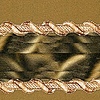HOME | DD
 Rtesian — Circe
Rtesian — Circe

#daz #daz3d #greek #iray #mythology #sorceress #witch #dazstudioiray
Published: 2020-10-29 11:38:31 +0000 UTC; Views: 1482; Favourites: 32; Downloads: 0
Redirect to original
Description
"Come, Odysseus. Sit beside me. Taste my wine. Enjoy its pleasures."Loosely inspired (and greatly altered) by John William Waterhouse's iconic painting
of Circe, the daughter of the sun god Helios in Greek mythology. Helios exiled her to the island of Aeaea for killing her husband, the Prince of Colchis. There Circe (pronounced Sir-see) discovered her power as a sorceress witch able to transform men into animals.
At this point, Homer’s Odyssey intersects Circe's storyline. Odysseus and his crew, after surviving a fierce storm pull into Aeaea's tranquil harbor to rest and recover. The crew spot smoke rising from the island's interior and head off to investigate. Finding Circe's home, she invites them to a feast and during the meal drugs the men, turning them into pigs with a wave of her wand.
Next morning, Odysseus awakens to learn the men have yet to return. He sets off to find them when Hermes intercepts him, explains what has happened, and gives Odysseus a potion to protect him against Circe. Guided by her sublime and beautiful singing, Odysseus enters and accepts her offer of wine. Circe waves her wand and the shock of its having no effect is followed by Odysseus drawing his sword, demanding the restoration of his men.
Circe is so remorseful of her deceit, she unleashes all her charms including what Homer described as her "full body". It worked because Odysseus remains for a year. (Author's note: A year?! Charms indeed!!).
Circe bears him two sons and in the grand tradition of Greek tragedy, and the foundation of modern soap operas millenia later, the younger son, Telegonus, accidently kills Odysseus with a poisoned dart supplied by Circe.
*****
Technical Note: (experienced Daz users need not read further)
The most interesting component of this image (IMO) is the mirror behind Circe. The metal leaf frame and the mirror itself comprise two jpg images placed on separate primitive planes. But hold on a second, you ask. Why aren't the planes' edges and corners showing?
1. load a jpg you wish to place in a scene into your favorite image editor, Gimp or Photoshop for example.
2. Isolate the image component you need so that it sits on a plain black background.
3. Save this image to load as usual into a primitive plane's Diffuse channel located in Daz's Surfaces panel.
4. Return to the image, alpha select the black background, then invert the selection so that only the component is selected. Desaturate it.
5. Create a new layer above the selected component and fill the selected area with white. Flatten the image. You should now have a white outline of the component on a black background. A reverse silhouette if you will.
6. Save the image and load it into the Cutout Opacity channel, located in the Geometry section of the Surfaces panel, of the same primitive plane you loaded the normal jpg version into.
7. Voilà !! Using the principle of 'black conceals and white reveals', Daz will only display the portion of the image in the Diffuse channel that matches the white portion of the jpg loaded in the Cutout Opacity channel. For those really new to Daz, the Cutout Opacity dial is used to increase the translucency (or lower the opacity) of a selected surface.
Related content
Comments: 2

👍: 0 ⏩: 1

👍: 0 ⏩: 0

















